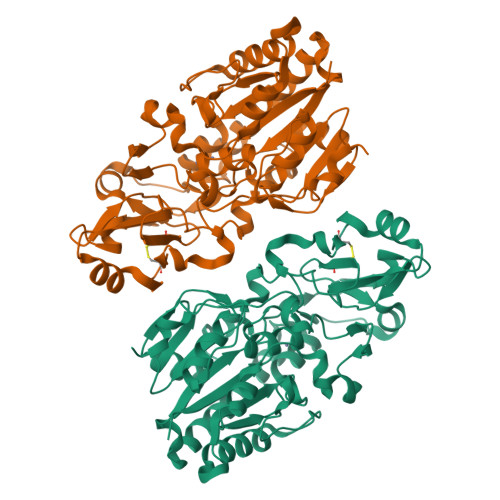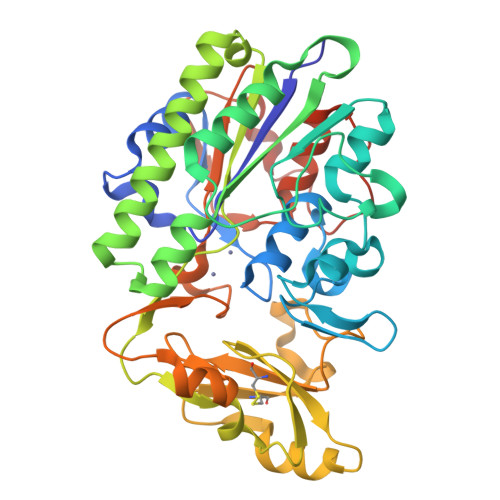Structural and functional comparisons of nucleotide pyrophosphatase/phosphodiesterase and alkaline phosphatase: implications for mechanism and evolution
Zalatan, J.G., Fenn, T.D., Brunger, A.T., Herschlag, D.(2006) Biochemistry 45: 9788-9803
- PubMed: 16893180
- DOI: https://doi.org/10.1021/bi060847t
- Primary Citation of Related Structures:
2GSN, 2GSO, 2GSU - PubMed Abstract:
The rapid expansion of the amount of genomic and structural data has provided many examples of enzymes with evolutionarily related active sites that catalyze different reactions. Functional comparisons of these active sites can provide insight into the origins of the enormous catalytic proficiency of enzymes and the evolutionary changes that can lead to different enzyme activities. The alkaline phosphatase (AP) superfamily is an ideal system to use in making such comparisons given the extensive data available on both nonenzymatic and enzymatic phosphoryl transfer reactions. Some superfamily members, such as AP itself, preferentially hydrolyze phosphate monoesters, whereas others, such as nucleotide pyrophosphatase/phosphodiesterase (NPP), preferentially hydrolyze phosphate diesters. We have measured rate constants for NPP-catalyzed hydrolysis of phosphate diesters and monoesters. NPP preferentially catalyzes diester hydrolysis by factors of 10(2)-10(6), depending on the identity of the diester substrate. To identify features of the NPP active site that could lead to preferential phosphate diester hydrolysis, we have determined the structure of NPP in the absence of ligands and in complexes with vanadate and AMP. Comparisons to existing structures of AP reveal bimetallo cores that are structurally indistinguishable, but there are several distinct structural features outside of the conserved bimetallo site. The structural and functional data together suggest that some of these distinct functional groups provide specific substrate binding interactions, whereas others tune the properties of the bimetallo active site itself to discriminate between phosphate diester and monoester substrates.
Organizational Affiliation:
Department of Chemistry, Stanford University, Stanford, California 94305-5307, USA.




















